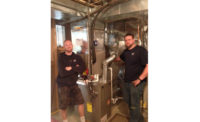Natural gas prices are on the rise. In a year where manufacturing and shipping costs have already bludgeoned our bottom line, this is an additional fear touching many homeowners and businesses.
HVAC businesses are awash in strategies to mitigate these costs for themselves, so I’m not here to add to that pile. But how do you prepare the customer for these increases? Contractors can’t control the rising costs, but we can prepare customers in ways that increase trust.
The Problem
According to the U.S. Energy Information Administration, “average U.S. household expenditures for all major home heating fuels will increase significantly this winter primarily because of higher expected fuel costs as well as more consumption of energy due to a colder winter.”
Propane costs are expected to increase more than 50%. Natural gas, 30%. Even electricity is expected to rise between 5-10%.
And if you’ve been to the gas pump in the last month or two, you don’t need statistics to tell you that energy costs are rising.
This will hit certain parts of the country harder than others. But no one is exempt from its impact. So it behooves contractors to know how to prepare their customers for the coming months.
The Customer Problem
Let’s be brutally honest for a moment: For many homeowners, if their energy costs dramatically increase, it’s going to leave a negative impression of their HVAC partner. Maybe the sales representative promised lower energy costs with that recent furnace upgrade or humidifier. Maybe they are simply skeptical of the quality of installation or equipment they have.
Fair or not, some of the heat (literally and figuratively) is on us as heating and cooling experts.
So what can we do? As much as I’d like to call up those in charge of inflationary rises and energy production and have a nice, long chat with them, that’s not an option.
The Solution: Proactive Advice & Transparency
The first step is to realize that we shouldn’t just exist to maintain someone’s HVAC equipment. We exist to be their partner in home comfort.
To that end, being a resource for information and strategies — via phone calls, emails, social media, and other outlets — can help. We’ve talked to customers in recent weeks about many items, including:
- Door and window seals, which can contribute to heat loss.
- Leaky ductwork. This is still an HVAC job, but is something not everyone thinks of that can contribute mightily to heat loss.
- Turning down the heat. It stinks to tell people to tough it out, but blankets and warm clothes can make up for quite a bit of cost savings at the thermostat.
- Tune-ups and maintenance. No need to swing for the fences with a new system. Let’s just make sure their current system is running smoothly.
- High-efficiency gas furnaces. This is the last and most expensive option I’m listing, which I’ll talk about more below.
If you’re providing value, you’re building trust. Particularly with existing customers, this can aid in retention rates during the lean times of the year when everyone is trying to lure customers away with incentives, coupons, and other deals. These are short-term fixes. They can work sporadically, but building long-term trust is the only way to solve for the long-term.
Lastly, we don’t sugarcoat it. We were honest with our customers about rising manufacturing costs earlier in the year, and we’re being honest about these increases as well. Homeowners need to plan for increases. Better to be frank with them about this fact than bury our heads in the sand until it passes.
Solve, Don’t Sell
There’s a temptation to turn our current situation into a selling opportunity. “Hey there, worried about gas prices? Check out our high-efficiency equipment!”
We’re in the business of installing and selling HVAC equipment, so this is a natural tendency. But if we lead with the sale instead of leading with value of various types, it can come across as exploitive and disingenuous.
I recommend seeing how much of a problem it is for the homeowner first, then talking to them about tips and strategies that can help them. If it’s of value and they follow your advice, you have probably already made the sale whenever they’re ready.
For clarity, in our broader marketing, we’re definitely presenting new equipment as a solution. Rising energy costs might be the tipping point for many to get that new system they’ve been putting off for several years. Similarly, many of us will be getting phone calls (or already have) after the first winter energy bills arrive for many homes. And we’re here to help when they’re ready.
But the point is that it’s not the end of the conversation, nor the only item we’re discussing with our customers.
Weathering the Storms
I’d call this “weathering the storm,” but the last couple years have sent multiple societal storms our way — and we’re probably not done yet.
Which is why it’s more important than ever to treat customer relationships like partnerships. If you’re the one helping them through this storm, in ways large or small, they’ll still be a loyal customer when the next one hits. It might be a small consolation next to the various forces making our industry more expensive for contractors and homeowners alike, but it’s what will allow companies to thrive despite those forces.






Report Abusive Comment